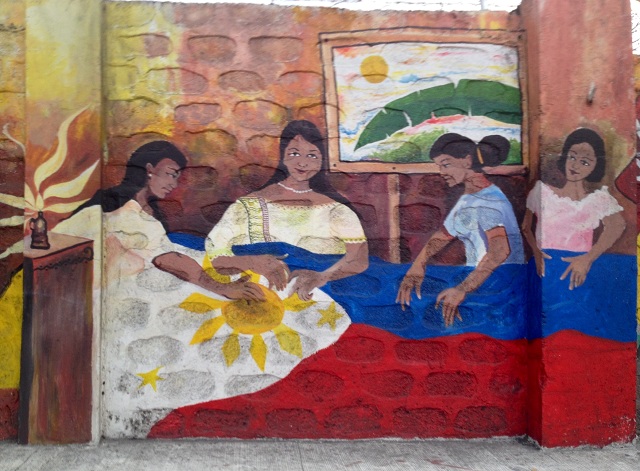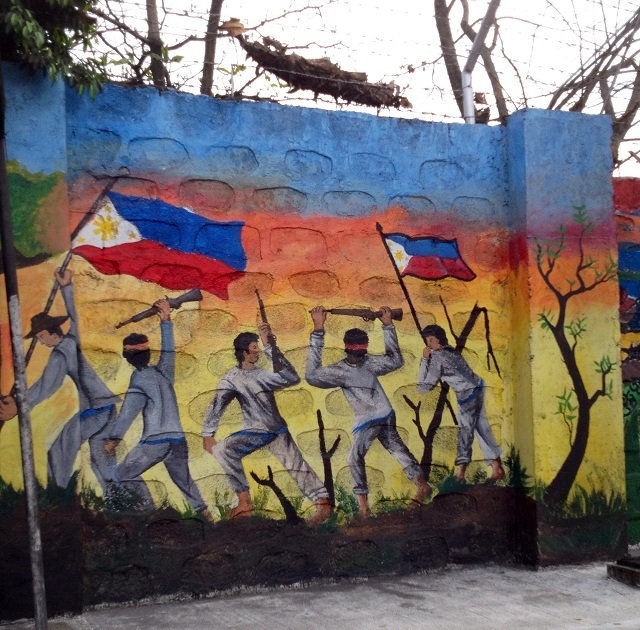Filtered by: Lifestyle
Lifestyle
Peace in paint: The public legacy of David Sicam
Text and photos by JENNY ORTUOSTE

The AFP Peace Mural depicts Filipinos from all walks of life—Christians, Muslims and indigenous peoples, soldiers and students, doctors and farmers, children and adults.
Bursting with ripe color and stretching for 3.77 kilometers along three of the country’s busiest streets, the AFP Peace Mural is one of the world’s longest murals.
It wraps around the perimeter fence of the Armed Forces of the Philippines headquarters on Boni Serrano Ave., Epifanio De Los Santos Ave. (EDSA), and White Plains Ave. in Quezon City. Soldiers and volunteers painted it over eight Saturdays last year beginning on May 26.
The work’s official name is “Lakbay Para sa Kapayapaan sa EDSA” and was a joint project of the AFP, the Metropolitan Manila Development Authority, the Office of the Presidential Adviser on the Peace Process, the Asia-America Initiative, and the Dolphins Love Freedom Network.
The AFP envisioned it to embody bayanihan, the military’s theme under this administration.

It wraps around the perimeter fence of the Armed Forces of the Philippines headquarters on Boni Serrano Ave., Epifanio De Los Santos Ave. (EDSA), and White Plains Ave. in Quezon City. Soldiers and volunteers painted it over eight Saturdays last year beginning on May 26.
The work’s official name is “Lakbay Para sa Kapayapaan sa EDSA” and was a joint project of the AFP, the Metropolitan Manila Development Authority, the Office of the Presidential Adviser on the Peace Process, the Asia-America Initiative, and the Dolphins Love Freedom Network.
The AFP envisioned it to embody bayanihan, the military’s theme under this administration.

The peace sign and the word "kapayapaan" are recurrent motifs along the mural's 3.77-km stretch.
Among the images reinforcing this theme are people from all walks of life, interacting with soldiers. A girl wearing a red bandanna hands a flower to a soldier in camouflage. Soldiers also link arms with priests, doctors, farmers, office workers, nuns, schoolchildren and farmers.
The words "kapayapaan" and "peace" are repeated over and over in letters the size of a child, as is the circular peace symbol. Waves are another recurrent motif. The art is simple and bold, rendered eye-poppingly bright with colors you would find in a small box of crayons.
This is what 2.4 million travelers along those roads see on the way to and from their destinations – the symbols and images of a nation working together in peace and harmony.
What few of those travelers know is how that mural came to be. It was designed by a group of 30 artists who brought the theme to life.

The words "kapayapaan" and "peace" are repeated over and over in letters the size of a child, as is the circular peace symbol. Waves are another recurrent motif. The art is simple and bold, rendered eye-poppingly bright with colors you would find in a small box of crayons.
This is what 2.4 million travelers along those roads see on the way to and from their destinations – the symbols and images of a nation working together in peace and harmony.
What few of those travelers know is how that mural came to be. It was designed by a group of 30 artists who brought the theme to life.

The mural also celebrates our shared history. The creation of the Philippine flag is one of the scenes along Boni Serrano Avenue.
Among those artists was Andrew David Sicam, a musician-painter-mountaineer, father, husband, son, and friend to many.
Sicam, along with 14 others, lost his life in the GV Florida bus tragedy in Bontoc last month. Outside of his circles, he was virtually unknown. Certainly his name came to the forefront of public consciousness only after the accident.
He had an amazing sense of dedication to his work. According to Lt. Col. Harold Cabunoc, chief of the AFP 7th Civil Relations Group, Sicam and the other artists conducted workshops for the 3,000 volunteers before the project started, and sketched the designs on the walls for the volunteers to fill in.
He and his group did all this work for free.
Sicam was only 35 when he died. The AFP Peace Mural is his public legacy, the one accessible to everyone who passes along EDSA.

Sicam, along with 14 others, lost his life in the GV Florida bus tragedy in Bontoc last month. Outside of his circles, he was virtually unknown. Certainly his name came to the forefront of public consciousness only after the accident.
He had an amazing sense of dedication to his work. According to Lt. Col. Harold Cabunoc, chief of the AFP 7th Civil Relations Group, Sicam and the other artists conducted workshops for the 3,000 volunteers before the project started, and sketched the designs on the walls for the volunteers to fill in.
He and his group did all this work for free.
Sicam was only 35 when he died. The AFP Peace Mural is his public legacy, the one accessible to everyone who passes along EDSA.

A scene from the Philippine revolution comes to vibrant life along Boni Serrano Avenue. But peace is preferred. 'Kapayapaan ay makakamtan,' is one reassuring message on the wall along White Plains Avenue. 'Paniniwala'y ano pa man, tayo ay isang lahi lamang,' is another.
“Peace” is the obvious message, what the artwork denotes with the linked arms, fish and fruit, gentle waves, the placid and serene countenances that bespeak the theme as well as limitations of a large work executed by volunteers who filled in the blanks.
It was a contribution to the military’s community relations program, an effort to help bring about in subliminal ways an end to the conflict that has plagued the country for decades and held back development in areas where fighting between soldiers and armed groups is rife.
What the mural connotes are deeper themes on war and peace and art and other human issues.
War is necessary in some cases, some images from the artwork say, especially those that portray historical scenes from the Philippine revolution. Battle is unavoidable if a people seek to reclaim their freedom from an invader.
But war is a last resort. Peace is to be preferred as a means to the ends of society, that development takes place best in an atmosphere of unity and bayanihan, working together for the common good.

It was a contribution to the military’s community relations program, an effort to help bring about in subliminal ways an end to the conflict that has plagued the country for decades and held back development in areas where fighting between soldiers and armed groups is rife.
What the mural connotes are deeper themes on war and peace and art and other human issues.
War is necessary in some cases, some images from the artwork say, especially those that portray historical scenes from the Philippine revolution. Battle is unavoidable if a people seek to reclaim their freedom from an invader.
But war is a last resort. Peace is to be preferred as a means to the ends of society, that development takes place best in an atmosphere of unity and bayanihan, working together for the common good.

In an image reminiscent of the People Power Revolution, a girl hands a flower to a soldier. This portion of the AFP Mural is along EDSA.
The mural also says that art in all its vibrance and exuberance has a place in society. That art is for everyone, and can be made by anybody with the inclination. That art is meant to be made and shared and lived with. That art is not merely decoration but a vessel for meaning and message.
Sicam’s spirit lives in each curve, each line, each stroke of color. He aimed this work to inspire viewers to peace in thought, word, and action, but also to more profound things as well.
How many can say that they have created something meaningful and beautiful that will live long after they are gone?
If anything, the mural should also serve as a reminder that a life should be lived to the fullest; that every moment given is precious, because once gone, it cannot be reclaimed; that what is left behind after life is gone is legacy. — BM/KG, GMA News
Sicam’s spirit lives in each curve, each line, each stroke of color. He aimed this work to inspire viewers to peace in thought, word, and action, but also to more profound things as well.
How many can say that they have created something meaningful and beautiful that will live long after they are gone?
If anything, the mural should also serve as a reminder that a life should be lived to the fullest; that every moment given is precious, because once gone, it cannot be reclaimed; that what is left behind after life is gone is legacy. — BM/KG, GMA News
More Videos
Most Popular




